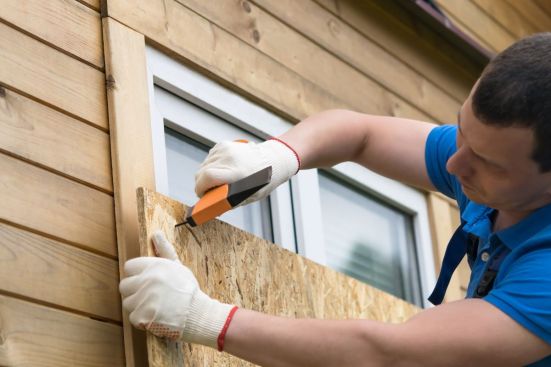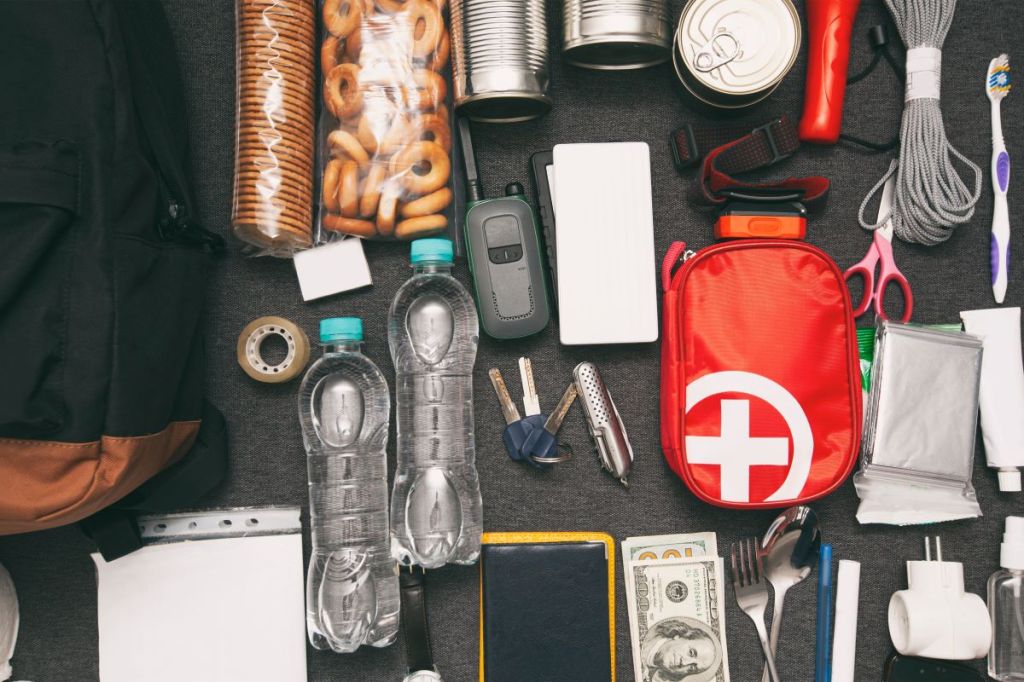
Adobe Stock / Generated with AI
What’s projected to be brutal hurricane season can be even more daunting for home builders with projects underway. Exposed to extreme elements, homes under construction are extra vulnerable to damage from wind gusts, heavy rains, and flooding.
For residential builders, coverage and preparation are key. Considering existing properties from Texas to Maine, CoreLogic’s 2024 Hurricane Risk Report estimates that more than 32.7 million residential properties are at risk of moderate or severe damage sustained from hurricane-force winds this season. The estimate equates to a combined reconstruction cost of $10.8 trillion (not all homes experience a total loss).
With one major hurricane having already wreaked havoc on Houston, Texas, how can home builders best prepare and protect their projects? BUILDER chatted with three professionals versed in insurance and emergency preparation to find out.
1) Have a Plan
In hurricane-prone areas, it is important for construction teams and leadership to have a plan in place well before a storm is on the way. The plan should include preparedness tasks as well as post-storm response expectations. Chuck Miccolis, managing director of commercial lines at the Insurance Institute for Business and Home Safety (IBHS), says, “The construction site management team should have a well-documented emergency preparedness and response plan which addresses the weather-related hazards and risks they pose to a construction site.”
2) Understand Your Insurance Coverage
For construction projects, understanding your insurance policy is vital—especially before a storm is in route. Ali Pool, vice president at Insurance Office of America, says, “An annual review of coverages, limits, deductibles, and limitations of your current insurance program with a broker should be mandatory. Carriers are more particular with underwriting guidelines than ever before, so it is more important than ever to be in communication with your insurance broker to be properly prepared.” Cassie Sheets, data journalist at Insurify, points out that no policy will specifically name a hurricane as a covered peril, but a Builders Risk or Course of Construction policy will offer coverage for property damage; fire or lighting; collapse; windstorm or hail; and others.
Sheets says it’s important to look at what damage could occur during a hurricane and make sure those potential risks are covered. “Builder Risk or Course of Construction policies will offer coverage for things like property damage, debris removal, and backup of sewers and drains, but it won’t cover flooding. If flooding occurs as a result of a hurricane a builder’s policy will most likely not offer protection for the resulting damage and loss,” Sheets adds.
3) Create and Store Contact Lists
When advising clients, Pool offers a check list of to-do items to best prepare. “This checklist needs to be simple and not a dust-collecting paperweight on your desk. It needs to be a living, breathing document that is constantly updated and created specifically for your property,” she adds. In addition to premise checks, securing supplies for temporary repairs (think tarps and plywood), and prepping supply kits, she recommends listing and storing contact information for vendors. The contact sheet can include your insurance agent, attorney, bank, accountant, disaster repair or clean up team, among others.
A data sheet of basic insurance coverage information is also helpful to have on hand including agent name, property and wind carrier name, and the policy number. An extra step in preparedness, Pool says, “Pre-negotiate service contracts with an emergency/disaster company, debris removal company, security team, etcetera.” Arrangements for a line of credit to fund salaries, hurricane deductibles, and immediate expense needs is also encouraged.
4) Trust Your Insurance Partner
In addition to understanding your coverage as Sheets recommends, Pool’s best advice is to have an insurance partner that is hands-on. Pool shares, “It is important to do business with a true insurance partner–someone that is familiar with your property. It is hard to properly insure a risk without evaluating the risk, so it always helps to do business with a broker who is willing to put boots on the ground. Commercial insurance programs should consist of more than just emails and phone calls.”
Sheets recommends gathering several quotes (if possible) when shopping policies, “Coverage varies between carriers. Finding affordable insurance with the right coverage in disaster-prone states can be difficult. Talk to an agent and make sure to compare quotes from multiple insurers.”

Adobe Stock
5) Secure the Jobsite
To minimize further damage, Miccolis outlines a helpful action item list to prepare for high winds, potential wind-borne debris, and flooding before a storm’s arrival:
- Properly store and secure loose construction materials, building components, and equipment on the job site.
- Brace and anchor all masonry and structural steel framing.
- Follow crane and other machinery manufacturer guidelines for proper operation and storage. Never operate this equipment during a weather event.
- Make sure all site signage, fencing, mobile offices, etc., are properly secured.
- Ensure that storm water drains are clear and operating properly.
- Elevate or protect any materials susceptible to water damage that may be flooded.



